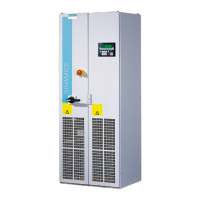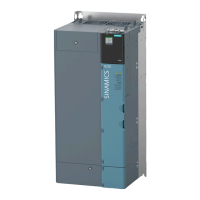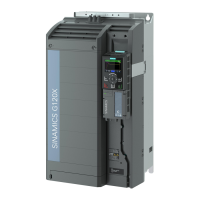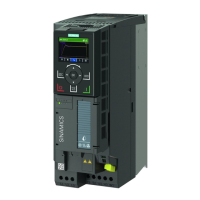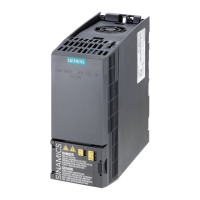Operation
7.16 Diagnostics
SINAMICS DCP
366 Operating Instructions, 09/2019, A5E34382853K
Acknowledging faults
The list of faults and alarms specifies how each fault is acknowledged after the cause has
been remedied.
1. Acknowledgment of faults with "POWER ON"
– Switch the drive unit on/off (POWER ON).
2. Acknowledgment of faults with "IMMEDIATE"
– Via a PROFIdrive control signal:
STW1.7 (reset fault memory): 0/1 edge
Set STW1.0 (ON/OFF1) = "0" and "1"
– Via external input signal
Binector input and interconnection with digital input
p2103 = "Requested signal source"
p2104 = "Requested signal source"
p2105 = "Requested signal source"
Across all of the drive objects (DO) of a Control Unit
p2102 = "Requested signal source"
3. Acknowledgment of faults with "PULSE INHIBIT"
– The fault can only be acknowledged with a pulse inhibit (r0899.11 = 0).
– The same options are available for acknowledging as described under
acknowledgment with IMMEDIATE.
Note
The SINAMICS DCP cannot resume operation until all active faults have been
acknowledged.
7.16.3.2 Buffer for faults and alarms
Note
A fault buffer and an alarm buffer are provided for each drive object. The specifi
c messages
are entered in these buffers for this object.
ents of the fault buffer are saved to the non-volatile memory when the Control Unit
the fault buffer history is still available when the device is powered up
Note
The entry in the fault/alarm buffer is made after a delay. For this reason, the fault/alarm
buffer should not be read until a change in the buffer is also recognized (r0944, r2121) after
"Fault active"/"Alarm active" is output.

